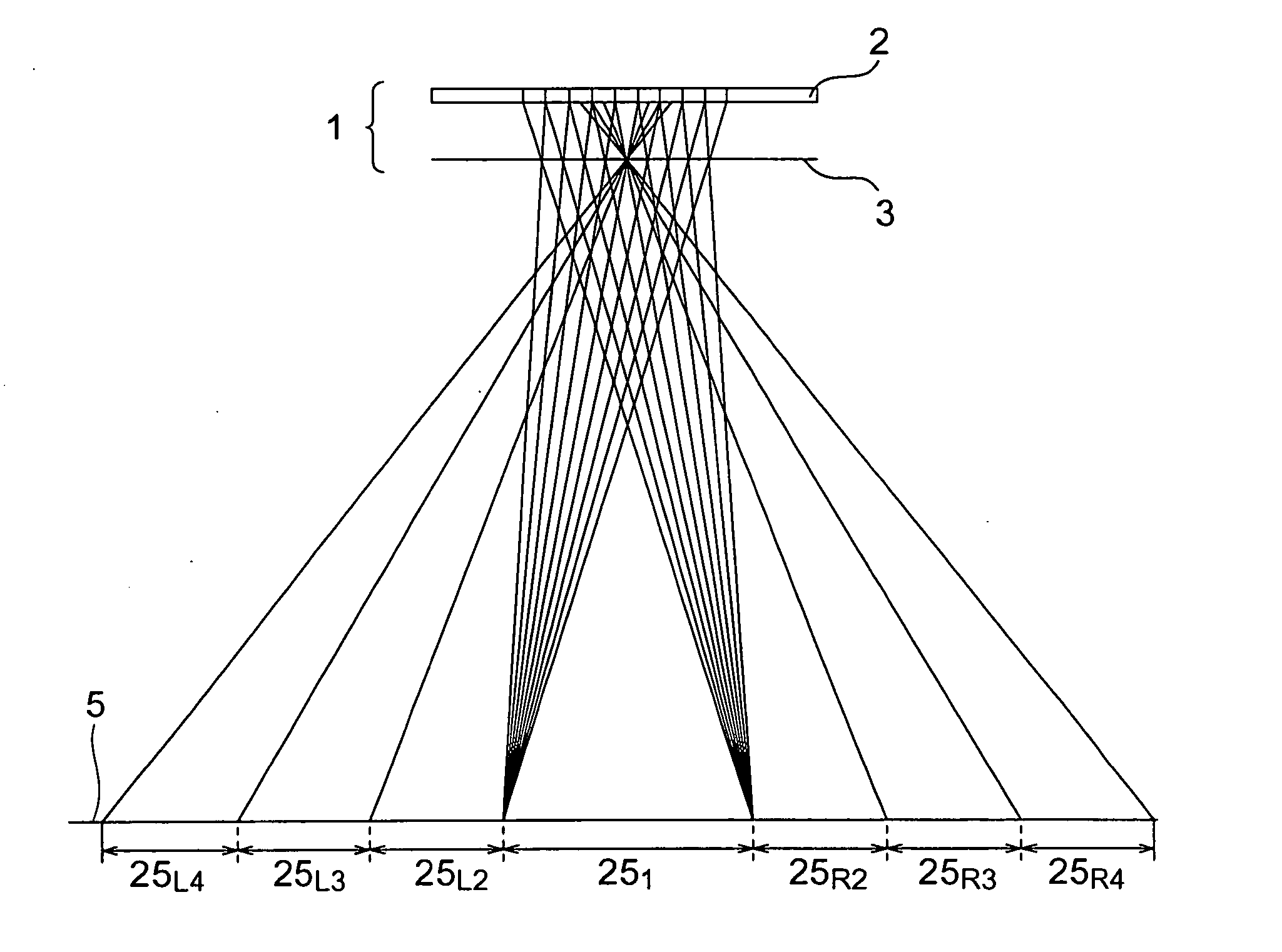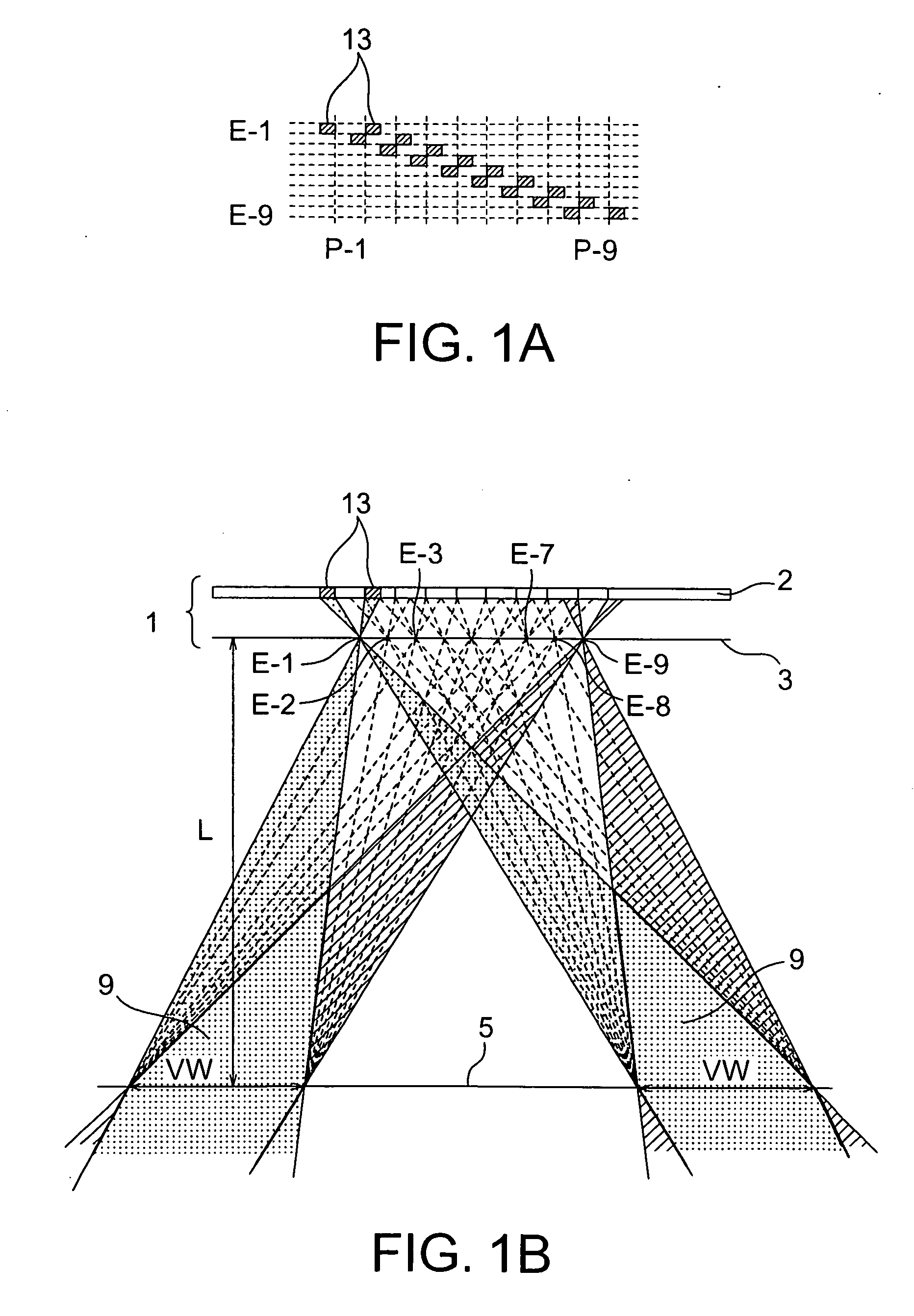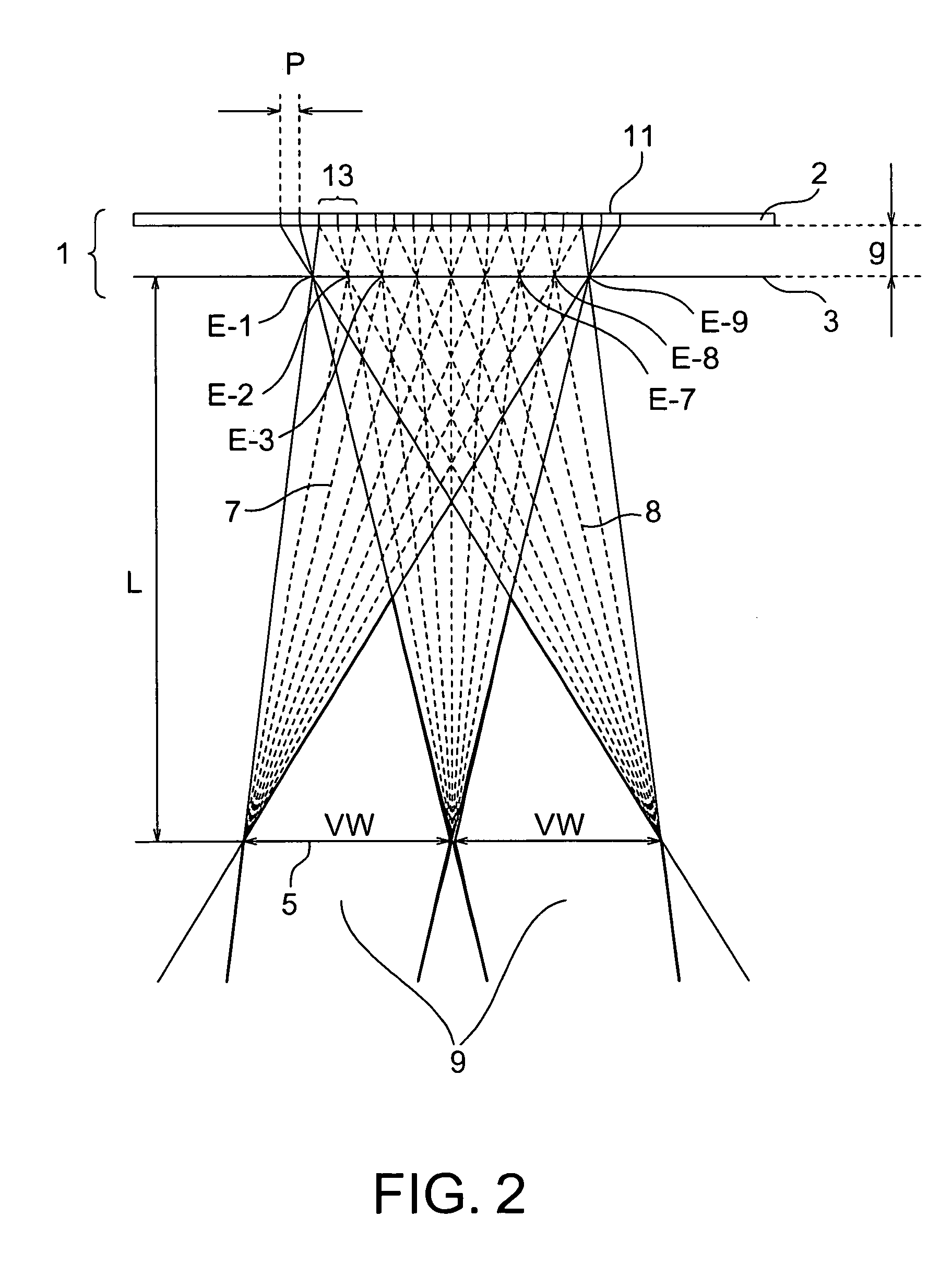Image display apparatus
a technology of image display and display screen, which is applied in the direction of optics, electrical equipment, instruments, etc., can solve the problems of limited observable range (a viewing zone) and the inability to produce a gap g smaller than the thickness of glass
- Summary
- Abstract
- Description
- Claims
- Application Information
AI Technical Summary
Benefits of technology
Problems solved by technology
Method used
Image
Examples
example 2
[0078] In this Example, the two-dimensional image display apparatus shown in FIG. 1B was a liquid crystal display apparatus and it was provided at its front face side with an optical plate 3 and at its back face side with a back light (not shown). Specifically, as the liquid crystal display apparatus, UXGA—LCD panel [(Product Name: Inspiron 8500) and the number of pixels was 1900×1200, a screen size was 331.2 mm ×207 mm] was used. A pixel was formed in square having a size of 172.5 μm×172.5 μm, a horizontal width of each sub-pixel of red, green, blue was 57.5 cm, and a vertical width thereof was 12.5 μm, the sub-pixel being able to be driven independently. In an ordinary two-dimensional image display apparatus 2, one pixel is constituted of three sub-pixels of red, green and blue arranged laterally. In the Example, however, the two-dimensional image display apparatus 2 was used without applying this constraint to the apparatus. A mosaic arrangement was used as a color filter arrange...
example 3
[0088] A two-dimensional image display apparatus was disposed such that a display thereof was directed upwardly like Example 2 and a viewing zone division in a vertical direction was performed such that two viewers positioned so as to be opposed to each other on both long sides of the display were included in the divided viewing zones (see FIG. 11).
[0089] Designing was conducted such that the viewing zone width VW of the viewing zone 251 shown in FIG. 5 was 370 mm such that each of the viewers could view corresponding one of images within a range of 185 mm centering on a direction of 30.7° from the front of the display in a vertical direction in the viewing length L (=350 mm) assuming two viewers opposed to each other via a display with a display face directed upwardly. At that time, considering the gap (=0.7 mm) between the glass and the polarizing plate in the liquid crystal display, the vertical number of pixels for elemental image displaying (the number of parallaxes in a verti...
example 4
[0093] Such a configuration was employed that a two-dimensional image display apparatus was used like Example 1 and one viewer could view an image in the ranges of the viewing zones 25L2 and 25R2 shown in FIG. 5 with his / her both eyes. That is, designing was performed such that the viewing zone width VW of the viewing zone 251 shown in FIG. 5 was 42 mm such that one viewer could view a three-dimensional image within a range of 21 mm centering on directions of 2.58° from the front of the display in a horizontal direction leftward and rightward in the viewing distance L (=700 mm) (see FIG. 18). That is, the center of the viewing zone coincided with the interpupilliary distance (63 mm). At that time, the gap g was obtained in the following manner. g=700×(0.044×16) / 42=11.7 (mm)
[0094] Specifically, as a thickness gr of a lenticular sheet made from PMMA, the following value was set from the equation (3) by subtraction of a gap gs (=0.8 mm) between a glass and a polarizing plate in the ...
PUM
 Login to View More
Login to View More Abstract
Description
Claims
Application Information
 Login to View More
Login to View More - R&D
- Intellectual Property
- Life Sciences
- Materials
- Tech Scout
- Unparalleled Data Quality
- Higher Quality Content
- 60% Fewer Hallucinations
Browse by: Latest US Patents, China's latest patents, Technical Efficacy Thesaurus, Application Domain, Technology Topic, Popular Technical Reports.
© 2025 PatSnap. All rights reserved.Legal|Privacy policy|Modern Slavery Act Transparency Statement|Sitemap|About US| Contact US: help@patsnap.com



